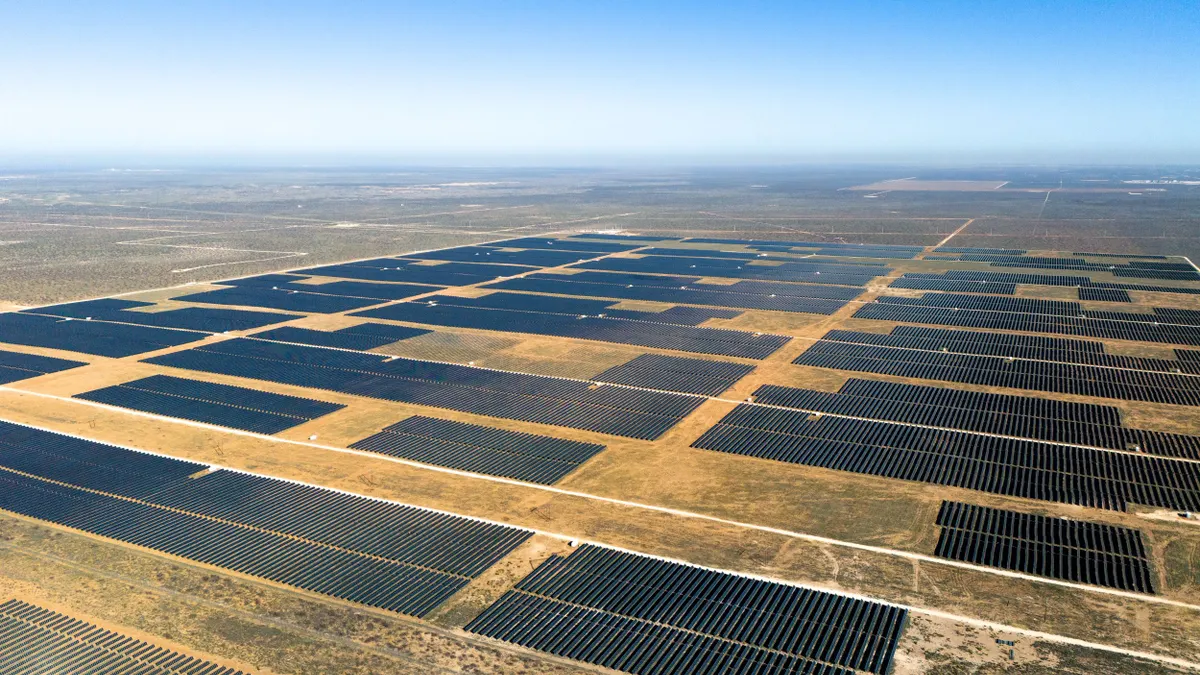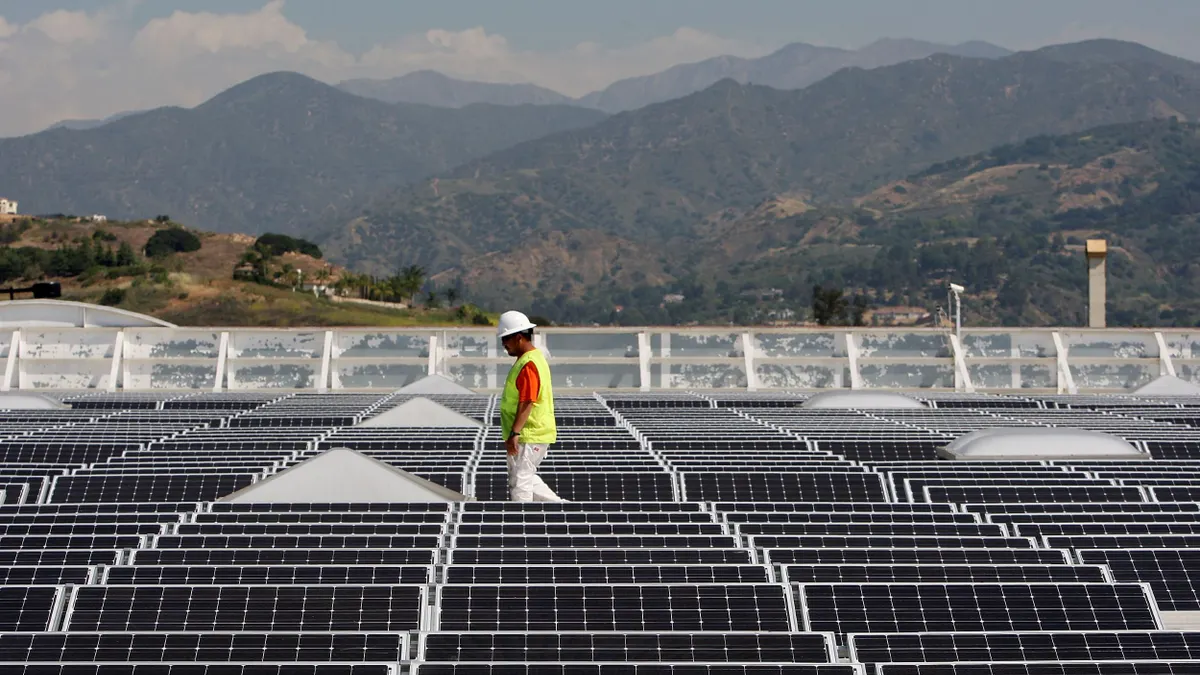Surprisingly, the plunging cost of some renewables could keep states from reaching ambitious climate goals if planners fail to recognize the higher value in some higher cost renewables.
States like New York, Massachusetts and California with ambitious 2030 renewables and 2045 emissions reduction mandates are starting to find a tension between cost and value. Offshore wind's reliability and emissions reduction values have raised its profile, though it remains more expensive than onshore wind. Now California policymakers are beginning to see the potentially extraordinary, but so far unrecognized value of its geothermal resources.
"We overbuilt natural gas and then we built so much solar that we have solar over-generation, so we have fallen in love with batteries," Center for Energy Efficiency and Renewable Technologies (CEERT) Executive Director V. John White told Utility Dive. "Batteries are great, but planning is too driven by costs, and not enough by the value in meeting grid needs, and not having a balanced resource portfolio could be the Achilles heel of our climate effort."
A debate between the California Independent System Operator (CAISO) and the California Public Utilities Commission (CPUC) over how to balance the state's energy portfolio may become a model for planners. Its objective is recognizing renewables' general values, like the ability to meet grid needs. In that debate, policymakers are taking a new look at geothermal energy.
Unlike solar and wind, geothermal is fully dispatchable. Like offshore wind in New England, it is abundant in the West but has gone underused because of development costs. Those costs, though, may be outweighed by a high capacity factor that can allow it to provide a wide range of grid services, and its brine's potential, being pursued by Warren Buffett’s Berkshire Hathaway Energy and others, to be an unmatched source of lithium for batteries.
Geothermal and the value concept
"It can be more expensive to add cheap solar than to add expensive geothermal," David Olsen, a member of the CAISO Board of Governors, told Utility Dive, citing a CEERT study that substituted 1,250 MW of geothermal from California’s already developed Salton Sea resource for 3,800 MW of solar in modeling a 50% renewables portfolio.
The unsubsidized levelized cost of energy (LCOE) for utility-scale solar is between $32/MWh and $44/MWh and geothermal is between $69/MWh and $112/MWh, according to a 2019 Lazard analysis.
But geothermal’s three times higher capacity factor would save California "$662 million per year in energy and ancillary service costs, $44 million per year in system resource adequacy costs, and $29 million per year in flexible resource adequacy costs," the 2016 CEERT study reported. It would also reduce "utility revenue requirements by nearly 2%" and lower overall "California energy costs" $75/MWh.
Even with a $4.5 billion investment in "new bulk storage," geothermal is "over $20/MWh more valuable than solar," the study added.
"The ISO has been trying to bring this to the attention of the PUC for several years," Olsen said. "The PUC’s focus is ‘least-cost resources,’ but the ISO is concerned because this is an operational issue."
"It has become alarmingly difficult to obtain imports to meet afternoon ramps of up to 13,000 MW"

David Olsen
Member, California ISO Board of Governors
California’s grid operator is concerned about meeting the state’s growing early evening peak demand when solar generation is diminishing, Olsen said. The CPUC "is directing the addition of low cost solar, which has almost no value when the grid needs it most."
To meet peak demand, CAISO uses natural gas and imported electricity, Olsen said. Natural gas peaker plants, with LCOEs between $150/MWh and $199/MWh, are costly and exacerbate greenhouse gas emissions. Imports may also increase costs or emissions, but, more significantly, may not be available, he added.
"It has become alarmingly difficult to obtain imports to meet afternoon ramps of up to 13,000 MW," Olsen said. "And it can create operational problems if the generators fail or variable renewables change."
Relying on natural gas is "counter" to California’s renewables and zero emissions goals, and "availability of imports are uncertain," affirmed CAISO Vice President for California Regulatory Affairs Mark Rothleder in a December 19, 2019, presentation to the CAISO board. California must "diversify the mix of renewable resources" to "match system needs."
The value of diversity
Diversity has value, but resources like geothermal are not being procured because their levelized costs are higher than solar, agreed Arne Olson, senior partner with Energy and Environmental Economics (E3), which does modeling for CPUC integrated resource plans (IRPs).
The value of solar was higher than the values of wind and geothermal when it displaced expensive natural gas generation during peak demand periods, Olson said. But E3 modeling shows current values for solar are similar because demand now peaks after sunset and the renewables penetration is higher. "All of the state’s geothermal will be picked up in the 2030s as California moves above 60% renewables."
"The marginal value of new solar has gone down dramatically," agreed CPUC Energy Division Head Edward Randolph.
Past procurement was mainly for renewable portfolio standard (RPS) compliance, but "value has become a key part of planning," Randolph told Utility Dive. Solar’s effective load carrying capacity (ELCC), set at 17% in a 2019 CPUC ruling, "means only 17 MW of a 100 MW solar procurement applies to the Resource Adequacy requirement assuring reliability during peak demand."
That could "significantly limit future procurements by California’s load-serving entities of stand-alone photovoltaics," he said. It will likely "increase procurements of storage, solar with storage, demand response, and other resources that can better meet peak demand."
A November 6, 2019, ruling on the newest 2030 California reference system portfolio asked stakeholders to "specifically address how a diverse portfolio can maximize the value of other resources like geothermal and pumped storage," Randolph added.
With the increasing understanding of value, solar procurement for RPS compliance "is not happening much anymore" in California, he said. And a coming solar-plus-storage ELCC value "will send a market signal that can avoid its over-procurement."
But, at its current LCOE, geothermal may still "not easily compete with wind or solar," Randolph added. "That said, a no regrets portfolio may need some amount of flexible non-weather-variant resource with an intrinsic value that cannot be fully evaluated in any mathematical formula."
The "enormous untapped potential for geothermal" nationally makes its value more than a California issue, according to the U.S. Department of Energy’s May 2019 GeoVision.
If regulatory and technical barriers are addressed, geothermal could provide 8.5% of U.S. electricity in 2050, GeoVision reported.
The availability of geothermal and solar in the U.S. are "largely contiguous geographically," so "solar will be built first, but as the grid is saturated with solar, the value of wind and geothermal will become higher," E3's Olson added.
And yet utilities in California and throughout the geothermal-rich Western U.S. continue to procure it slowly, if at all.
Utilities on geothermal
California's 2,760 MW of installed geothermal capacity leads the U.S. and all countries. Yet the Los Angeles Department of Water and Power (LADWP) has only about 200 MW in geothermal power purchase agreements (PPAs) to meet its 6,500 MW of peak demand, LADWP energy executive Theodore Zeiss told Utility Dive.
By 2023, LADWP plans to add only another 100 MW of geothermal as it closes 3,415 MW of natural gas generation and moves toward 100% renewables by 2045, despite being adjacent to the Salton Sea geothermal region’s 3,200 MW potential, Zeiss said.
"Our IRP calls for a significant build out of local solar, and it appears batteries will provide the balance of the needed flexibility and reliability for about the next decade"

Bryan Swann
Head of Resource and New Business Strategy, SMUD
In the near-term, the utility expects to add solar-plus-storage because at $75.50 per MWh, geothermal is more expensive, LADWP clean energy strategy executive James Barner told Utility Dive. But getting to 100% renewables without natural gas will take "either very long-term storage or resources like geothermal that can produce around the clock and supply capacity and RA," he added.
To meet its roughly 2,900 MW peak load, Sacramento Municipal Utility District (SMUD) has only 51 MW of geothermal capacity.
"Our IRP calls for a significant build out of local solar, and it appears batteries will provide the balance of the needed flexibility and reliability for about the next decade," SMUD Head of Resource and New Business Strategy Bryan Swann told Utility Dive. "Geothermal can’t compete," especially "considering how fast the price of solar and battery storage continue to drop."
But "today's storage technologies are not adequate to meet essential reliability standards" of a "100% natural gas-free" system, Swann said. "That is when resources like geothermal that add resource diversity and have higher capacity values become viable for carbon mitigation."
NV Energy had a 7,753 MW peak load in 2018, according to its most recent IRP. But it has only 447 MW of installed geothermal capacity, NV Energy Senior Vice President for Renewables and Origination Dave Ulozas told Utility Dive.
As the utility moves toward Nevada’s 50% renewables by 2030 mandate, geothermal "will continue to be part of the discussion," Ulozas said. "As a baseload resource, geothermal has many advantages that benefit our customers" despite its higher LCOE.
The underlying message from these utilities seems to be that new solutions that add value or reduce costs are needed to grow geothermal procurement — but advocates say there are ways to do both.
Geothermal as a loss leader
"Geothermal is not widely used because of its high upfront costs, which has turned away investors," Geothermal Resources Council (GRC) Executive Director Will Pettitt told Utility Dive. "That needs to change."
California can lead a geothermal scale up by showing how to increase its revenue streams, CEERT’s White said. Research from the University of California at Riverside proposes using geothermal to meet peak demand when the electricity price is high and using it to produce hydrogen fuel when the price is low, creating a new clean energy revenue stream.
A potentially even more lucrative revenue stream is available from extracting minerals, especially lithium, from geothermal brines, White added.
"The revenue potential from lithium is estimated to be about 15 times greater than that of selling power"

Jason Czapla
Principal Engineer, Controlled Thermal Resources
Global demand for lithium is growing and supply is tightening, according to a November 2018 BloombergNEF presentation to the California Energy Commission.
Policy efforts are emerging in California and at the federal level to create incentives for developing lithium extraction. And several companies, including Buffett's Berkshire Hathaway Energy, are already moving on the opportunity.
"The revenue potential from lithium is estimated to be about 15 times greater than that of selling power," Controlled Thermal Resources (CTR) Principal Engineer Jason Czapla told Utility Dive. "If a company owns and operates both the power plant and the lithium facility, the lithium revenue may make the electricity sales a loss leader."
CTR is developing a combined geothermal power and lithium extraction plant in California’s Salton Sea geothermal region, which is among the world’s richest lithium fields, according to Berkshire Hathaway Energy VP Eric Besseling.
A lithium extraction facility is also being developed in the Salton Sea region by EnergySource, adjacent to its 60 MW Featherstone geothermal plant, EnergySource COO Derek Benson told Utility Dive.
"We can produce around 19,000 tonnes of lithium annually," Benson said. "Last year’s global production was about 400,000 tonnes and the 2025 global demand forecast, driven largely by automotive markets, is 1 million tonnes. California could contribute 200,000 tonnes."
"Offshore wind was considered too expensive until its value was understood, but now it is being built, and electric vehicles were considered too expensive until the market demanded them"

Will Pettitt
Executive Director, Geothermal Resources Council
There are many uncertainties about lithium supply sources in South America and Australia and the demand impacts of alternative battery chemistries, Benson acknowledged. But "lithium will remain part of the equation for mobile energy storage applications because it is the lightest conducting element."
What lithium’s impact on geothermal power will be beyond California is also uncertain, both CTR’s Czapla and EnergySource’s Benson agreed.
Additional revenue streams can help lower geothermal's cost and attract new financing, but wind and solar prices are very low, Benson said. "It remains to be seen where the numbers shake out."
"Most geothermal fields do not have the high lithium content of Salton Sea brine, so it is unlikely to revolutionize the geothermal industry globally," Czapla said. But the geothermal resource there can make an enormous impact on California's renewable energy goals and enough lithium-rich brine to make the state a significant player in the global supply chain.
"Offshore wind was considered too expensive until its value was understood, but now it is being built, and electric vehicles were considered too expensive until the market demanded them," GRC’s Pettitt said. "It's a question of economics, which are based on market demands and the needs of the power sector, and that goes back to value."






















